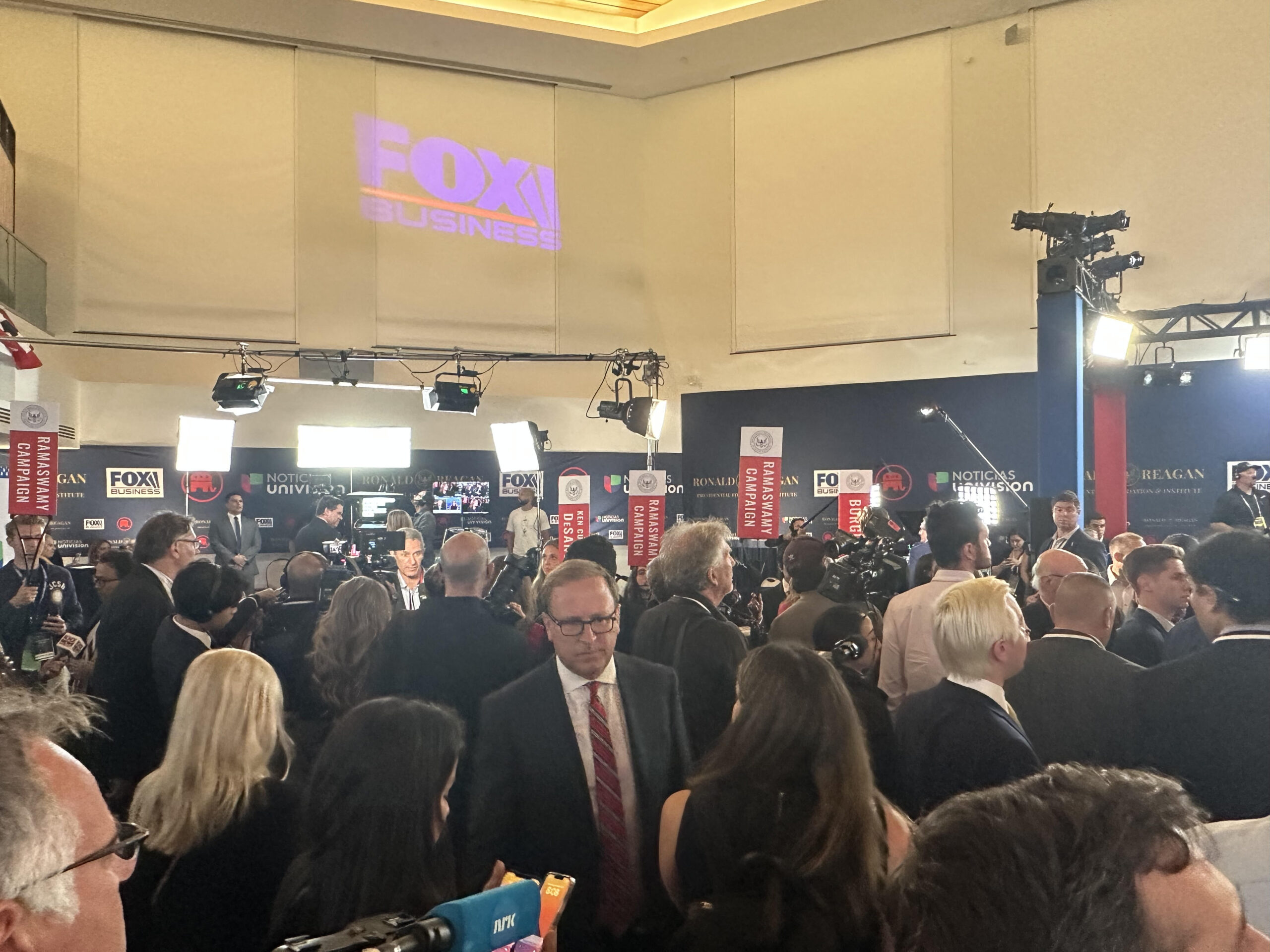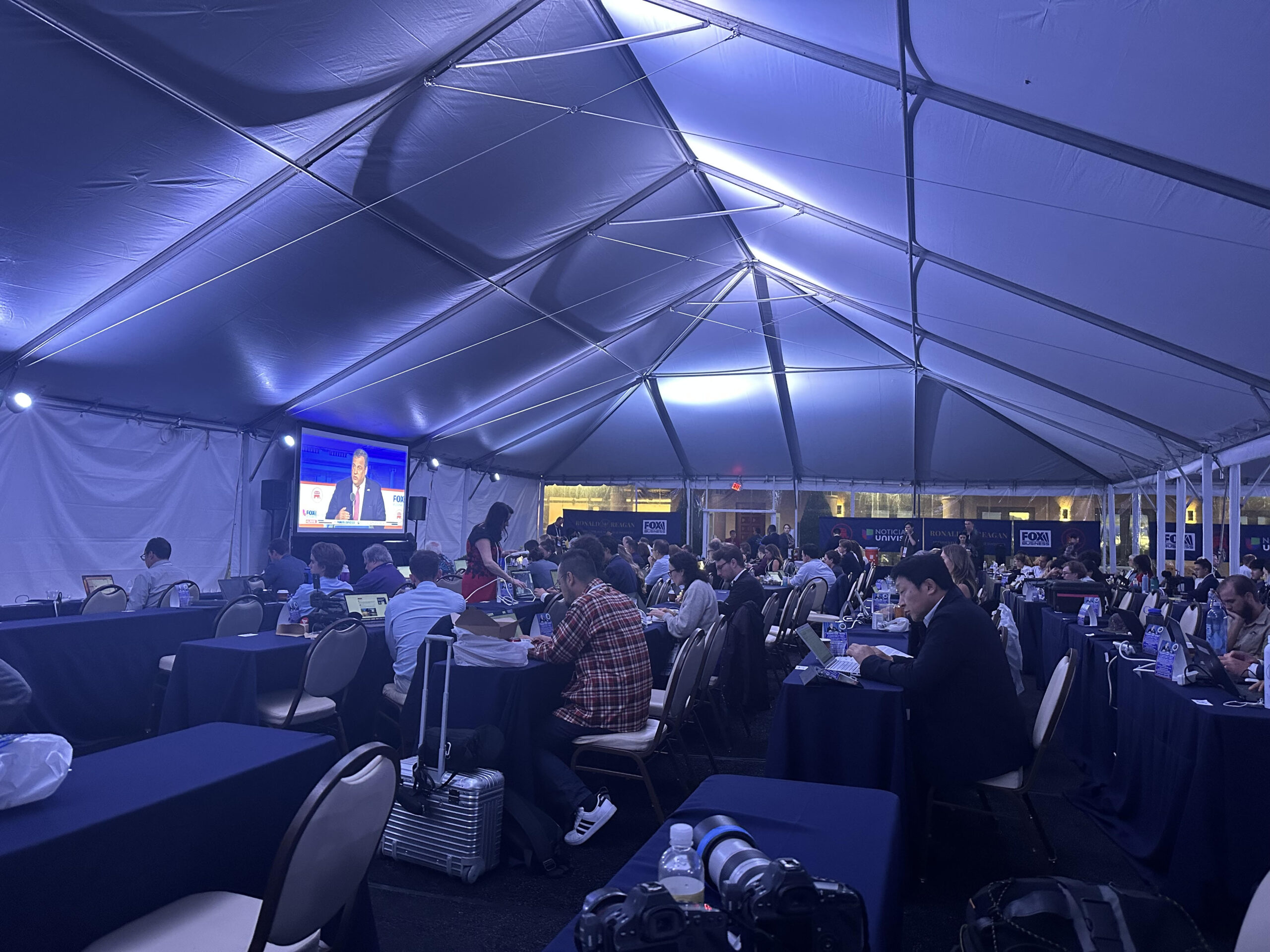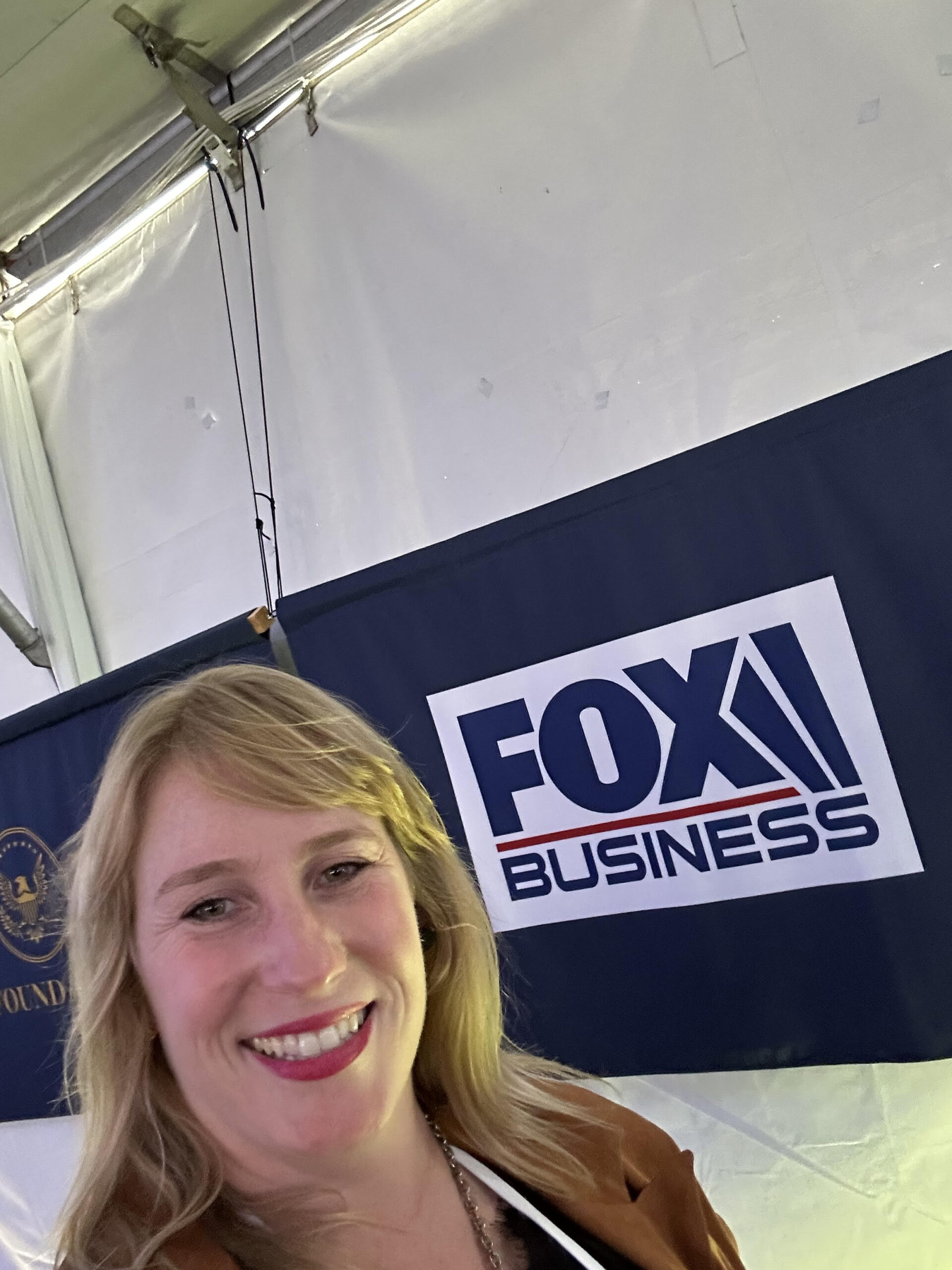What is it like to be in a presidential debate spin room?
Most people see presidential debates from their televisions. They see the barbs from behind the podiums, the interruptions, the back and forth with the moderators. They are made for TV experiences. But what about what happens behind the scenes?
What you aren’t seeing are the hundreds of journalists and representatives from campaigns and Super PACs who descend on the debate venue the morning of the debate. There is a Media Filing Center and a Spin Room where journalists camp out to hear from the professional campaign spinners. There’s an entire operation with media buses to cart people around, security protocols, etc.
I arrived at the Reagan Library to my friend David Polyansky, Ron DeSantis’ deputy campaign manager, standing outside with a group of TV cameras around him, no doubt doing interviews spinning them on how his boss Ron DeSantis was going to kill it on the debate stage later that night.
My destination was the Spin Room where I had a prescheduled interview with ABC News’ digital show to talk about how I thought Nikki Haley would do that night.
The SFA team (Nikki Haley’s Super PAC) had already done our debate rapid response plans. We had our social media posts and emails to reporters highlighting Nikki Haley’s positions and contrasting her with the other candidates based on what happens on the debate stage.
Now all there was to do was catch up with old colleagues and help set expectations for the debate. In the hours preceding the debate, the Reagan Library was a flutter with spinners spinning their candidates and reporters looking to understand the dynamics going into the debate and provide color for their reporting.
For many of us debate and election days are long. A lot of anticipation and a lot of hurry up and wait for something we have zero control over at the end of the day.
When the time came for the debate, I watched it in a room full of hundreds of my closest friends in the media, listening to their audible reactions to what became memorable lines. A few included exchanges about sleeping partners, Trump’s new name of Donald Duck, and an exchange about TikTok and Vivek’s foreign policy positions making people dumber.
Then we were all off to the Spin Room once the debate ended. There’s a picture below but imagine a room with TV sets around the perimeter and a mob of people in the middle all vying for attention. It’s a experience.
Here’s how it works: campaigns designate “spinners” who have large signs next to them saying their name and campaign. Their jobs is to give their assessment or “spin” of the debate to reporters attempting to influence the news coverage that comes out that night and the following day. Sometimes TV will grab a spinner and have them do a live interview from their post on the perimeter.
In the hour after the debate, I had dozens of conversations with reporters and a couple of TV interviews.
Depending on how the debate goes, campaigns make strategic decisions about whether their candidate themselves will go to the Spin Room or if they will let the debate speak for itself and have staff handle the spin. Some candidates come into the Spin Room to do a prime time TV hit and then they leave. In Simi Valley most of the candidates came in for TV interviews only with Sean Hannity’s show being the primary destination, and some did more than others.
Doug Bergum got the award for most TV interviews conducted in the Spin Room. His campaign had made the assessment that he couldn’t get his message out in the debate so he needed to do it in the Spin Room. It’s different for everyone.
After about an hour the room starts to clear out, TV breaks down their sets and everyone sets out to finish and file their stories and prepare for the next morning where the spin continues.
-Kirsten Kukowski
Simi Valley Spin Room

Simi Valley Media Filing Center

Kirsten at the debate sponsored by Fox Business!


Sounds exciting and would have had my head spinning!!